Peru has some of the best food in the world. You’ll love these Peruvian snacks.
Without a doubt Peruvian cuisine ranks in my top 5 favourite foods around the world. There’s an obvious Indigenous heart with colonial Spanish influence.
But you’ll also see incredible influence from both Chinese and Japanese immigrants reflected in Chifa and Nikkei foods. As well as from neighboring Ecuador.
And the best part about snacking in Peru is that they are small bites. So you can try lots in one day.
Peruvian Snacks
Ceviche
You can’t visit Peru and not try ceviche. It is the quintessential Peruvian snack, although can aso be eaten for lunch.
The classic Peruvian ceviche recipe is prepared by marinating raw fish in lime and lemon juice that will “cook it” without heat.
Peruvians add chili peppers, traditional aji for heat, coriander and chopped red onions. It is served cold or at room temperature.
Locals use sea bass, snapper, mahi-mahi or halibut to prepare ceviche. But other versions also use scallops, shrimp, octopus and squid.
Aside from being a snack, ceviche is also served as an appetizer because of its light yet acidic flavor profile that tickles the palate in preparation for a meal.
You can find this popular Peruvian delicacy in almost every local restaurant in Peru. It’s delicious with a cold, refreshing chilcano.
If you’re buying it from. astreet vendor, the golden rule is not to eat it after 12pm as it may have been sitting out for too long.
Habas Saladas
It’s not uncommon to see Peruvians munching on a pack of habas saladas. Yet for some reason no one really mentions it so most tourists miss it.
Maybe no one thinks it’s special.
It is one of the most popular Peruvian snacks. You can easily find it sold in supermarkets and local shops around the country.
Unlike most unhealthy Peru snacks, habas saladas is actually highly nutritious. The broad beans are deep-fried in oil to allow the skin to separate from the bean itself.
Once the skin is removed, the broad beans are flavored with salt or spiced with aji. It is packed as a delicious snack that Peruvians young and old love to munch on as snack.
Anticuchos
If you’re looking for a more exotic take on Peru snacks, then you should try anticuchos or meat kebabs.
You’ll see a lot of local food stalls selling these meat on a stick around Peru.
And the local Peruvian snacks recipes suggest that it should be made with beef heart or what locals call anticuchos de corazon.
Anticuchos have been part of Peruvian cuisine for centuries. They are part of most celebrations or eaten as a snack after a soccer match or very common as late night eats.
Anticucheras prepare this savory Peruvian snack by cleaning and marinating the beef heart.
They add a variety of seasonings that include aji panca for spice, cumin, garlic, vinegar, salt and pepper. It gives anticucho its unique flavor.
Anticuchos are traditionally served with boiled potato and corn or bread.
Choclo con Queso
Choclo con queso pays homage to one of Peru’s staple foods, corn. The country grows more than 30 varieties of “choclo” or corn.
But the ones from Cusco have the biggest kernels making them perfect for this traditional Peru snack.
Choclo con queso is made by boiling corn and serving it with a chunk of queso Serrano or Andean cheese or queso fresco or white cheese.
Some locals also add salt and chili pepper sauce to the snack to contrast the tanginess of the cheese and for a hint of spice since Peruvians love spicy food.
In some restaurants, choclo con queso is served with soup, tamales or sweet pastry as part of many Peruvian desserts.
Picarones
Picarones is Peru’s take on the traditional beignet of New Orleans and the buñuelos of Spain, but with a twist.
One of the most popular snacks for centuries now, picarones traces its origins back to Lima where it was a popular snack during the viceroyalty.
They are made with a special combination of ingredients that include local sweet potatoes and “macre” or local squash.
They are boiled and mashed until they become a puree. Then they are mixed with flour, sugar and yeast to form soft bread dough.
It’s left to ferment for a few hours before being shaped into small rings and deep fried until golden brown.
Picaroneras are a joy to watch in the streets of Peru where they serve masterfully create these doughnuts and serve them with traditional syrup made with “chancaca.”
Aside from being a snack, picarones are also considered one of the most popular Peruvian desserts.
Pestiños
Originating in the southern regions of Spain, pestiños have become a part of South American gastronomy for many years.
These sweet fried pastries are even prepared traditionally during Easter and Christmas, although you can find them in coffee shops and restaurants where they are served as teatime snacks.
Pestiño is made by creating dough with a combination of flour, eggs, baking powder and shortening.
It’s shaped like doughnuts and deep fried until they are golden brown.
These sweet treats are then dipped in a unique glaze and left to cool and dry. They are often served with tea or coffee.
Pestiños are also popular in other South American countries like Costa Rica that serves its pastry with a traditional tapa de dulce syrup.
Juanes
Named after St. John,the patron saint of the Amazon. Juane is a traditional Peruvian dish that you’ll commonly find in the Peruvian jungle.
It is also prepared by locals following the Peruvian snacks recipes every June 24 to commemorate the feast of St. John the Baptist.
During this day, Peruvians bring extra large juanes to the river where they swim, drink and enjoy the festivities with family members.
Juanes is traditionally prepared using rice, “gallina” or the meat of an older hen, hard-boiled egg and olives.
Some locals also substitute rice with cassava and other local ingredients like banana and tacacho are added following local customs.
The rice is flavored with cumin, turmeric, salt, pepper and oregano. The packaging is tied with strings and boiled for 1 ½ hours.
What you get is not only a traditional Peruvian snack but a complete meal that’s been enjoyed by locals from Peru’s jungle regions for centuries.
You can also find juanes being sold by street vendors or served in local restaurants in the city these days
Tamales
Tamales may be popularly related to Mexican cuisine, but the tamales from Peru are must-tries whenever you’re in the country.
What makes Peruvian tamale unique from its Mexican counterpart is the ingredients used for this Peru snack.
Instead of the traditional masa and lard, the Peruvian tamale is made with pureed corn and cooked with garlic, sugar, butter and chili paste.
This puree is then mixed with egg yolks before they are placed in dried corn husks and steamed until they are fully cooked.
Peruvians have different versions of the traditional tamale.
Vegetarians go for the no-meat option called tamales verdes while cheese lovers opt for tamales de queso.
Some locals also add pork filling using boneless pork shoulder roast into the tamales to make it a more savory meal.
Papa Rellena
Papa rellena or stuffed potato is another Peruvian snack and appetizer that’s popular in both South America and the Caribbean islands.
It’s also one of the most common street foods in Peru because it’s filling enough to be considered a complete meal.
This traditional snack traces its origins back to the war between Peru and Chile. Peruvian soldiers packed food that usually included seasoned meat, some vegetables and spices wrapped in boiled potatoes.
During lunch, the soldiers would heat the boiled potatoes before enjoying them. This humble dish eventually became what is now known as papa rellena.
Although Colombians, Cubans and Chileans have made their own versions of this Peruvian classic, the traditional papa rellena from Peru.
It is still considered the best version of this dish because of the potatoes used and the way locals prepare them using their hands.
Humitas
Although native to the Andean region of Ecuador, humita has been a traditional Peruvian snack for centuries.
South American countries have different versions of humita, but Peruvians make it using fresh corn.
It’s combined with sugar, cinnamon, raisins and lard for the sweet variety and queso fresco and salt for the savory version.
Humitas are traditionally wrapped in dried corn husks and boiled, steamed or baked in a pachamanca oven. They can be enjoyed as a snack, appetizer or one of the Peruvian desserts.
It’s easy to find humitas in the streets of Peru where it’s considered one of the country’s most popular street foods.
Huevos de Codorniz
There’s nothing more classic among all Peruvian snacks than the huevos de codorniz. They are simply hard-boiled quail eggs served with salt.
You’ll easily find huevos de cordoniz being sold as street food in Peru. They usually come peeled with a generous sprinkling of salt and packed in a paper bag to enjoy on the go.
Peruvian Empanadas
The humble empanada is a staple snack in South American countries. But what makes the Peruvian empanada different from its counterparts is its dough and traditional beef or chicken filling.
The term empanada comes from the Spanish word “empanar” that means to wrap in bread. It traces its origins back to Spain where it was eventually introduced to South American countries by conquerors.
In Peru, empanadas are traditionally made by filling pastry dough with minced beef. They are cooked with cumin, onion, coriander and chives.
Some locals also add olives, sliced boiled egg and sweet peppers. The pastry is folded and closed, after which, it is deep fried until golden brown.
Peruvian empanadas are very savory and filling that they can pass as appetizers or even as a main dish.
Chifles
Chifles are simply fried plantain chips that are a popular Peru snack because of their sweet and salty flavor combination.
This Peruvian snack is especially popular in Piura in the northern region of Peru where locals sell it as a street food.
What makes chifles different from other banana chips is that green plantains are used instead of the usual ripe bananas.
This gives the snack the perfect balance between starchy and sweet that retains its shape even after it is deep fried.
Chifles also get more flavor from being traditionally fried using the algorrobo blanco wood that adds a distinct aroma to the chips.
This snack is usually served as is or with pan-roasted corn or shredded pork jerky.
Chifles have been so well-loved in Peru that the Asociacion de Productores de Chifles Piuranos (APROCHIP) is pushing for this classic Peruvian snack to be declared as a flagship product of the country.
Sanguches
Sandwiches are deeply rooted in Peruvian culture. You’ll find different sangucherias around the country or restaurants that only specialize in sandwiches paired with sodas, juice or alcoholic drinks.
It’s also normal for Peruvians to flock to these restaurants after a night in town to satisfy their hunger before heading home and calling it a day.
A good Peruvian sanguche is all about the quality of the meat used in the sandwich.
Butifarra is one of the most common types of sanguches in Peru. It’s made with French roll filled with jamon del pais, salsa criolla, fresh lettuce and some mustard.
Most sangucherias also offer sanguche de pavo asado made with grilled turkey, sanguche de lechon made with grilled pork.
Sanguche de asado is made with veal strips. And sanguche de jamon del norte made with a sweeter version of jamon del pais.
Sanguches are traditionally served with a side of fried yucca balls called boliyucas or French fries.
Cancha Salada
Also known as the popcorn of Peru or cancha Peruana, cancha salada is one of the all-time favorite Peruvian snacks.
One of the most traditional Peruvian foods, it has been enjoyed by generations.
In fact, it’s deeply ingrained in Peruvian culture, especially for peasants and farmers who pack this hearty snack with some local cheese to eat for lunch when they’re working up in the mountains.
Cancha salada or cancha Peruana is made with “maiz chulpe” a special variety of local corn. The large kernels make them perfect for toasting.
These kernels are dried and toasted with oil until they are puffy. They are then seasoned with salt and are nice light snack
Unlike your regular popcorn, chulpe kernels don’t fully pop so they retain their starchy texture on the inside while getting all crisped up on the outside.
It’s similar to the Ecuadoran food known as tostado.
Today, it’s common for most Peruvian restaurants to serve cancha salada to nibble on while waiting for food.
It is also paired with ceviche because its crunchy and salty flavor profiles make the perfect complement to the dish.
Mais Cusco
Mais Cusco is the traditional corn that comes from the Cusco region of Peru in the Andes mountain range.
This corn variety is special not only for its sweet flavor but also because of its extra large kernels that make it perfect snack or side dish.
Mais Cusco is not only popular in Peru but also in other South and Central American countries like Bolivia, Ecuador and Colombia.
The corn is usually boiled and served with some salt or alongside ceviche.
Salchipapas
It’s hard to miss a salchipapas food stall in Peru.I t’s usually filled with patrons waiting for their serving of this classic Peruvian snack.
From the Spanish words “salchi” meaning sausages and “papa” meaning potato. Salchipapa is a combination of hotdogs and French fries topped with mustard, ketchup, mayonnaise or traditional aji sauce.
Locals especially love salchipapas because it’s cheap yet very filling.
Aside from street food vendors, salchipapas is also now served in some local restaurants and fast food joints.
Papas a la Huancaína
If Mexico has its classic papas con huevo or potatoes with eggs, Peru has its traditional papas a la huancaína.
This Peruvian dish originated from the city of Huancayo in the Andes region of the country.
A classic Peru snack, made with boiled yellow potatoes, hard-boiled eggs and black olives. It’s topped with traditional creamy cheese sauce that’s spiced with aji amarillo for that extra kick.
The same sauce is also used for risottos or as a dip for quail eggs or huevos de codorniz, crudités and fried yuca.
Churros
Peruvians love their churros as much as other Latin American countries.
In fact, you can easily find churro carts around Lima and other Peruvian cities.
The classic churro is made with dough that’s piped into hot oil and fried until it is golden brown. These churros are then rolled into some cinnamon powder and sugar for added flavor.
In Peru, the classic churro is given a unique twist by filling it up with manjar blanco, which is a traditional vanilla or chocolate cream.
Some street food vendors have also created their own fillings for their churros to make them more attractive to customers.
Peruvian churros are not only popular as snacks but they are also served as one of the traditional Peruvian desserts.
Now if you want to enjoy your traditional Peruvian churros in a restaurant, you have to visit Manolo in the Miraflores area.
They are known for serving some of the best churros in all of Peru for more than 40 years.
Chips Andinas
Chips andinas is the Peruvian take on the classic potato chips.
In fact, you’ll know that these chips come from Peru because they are made from different colored native Andean potatoes that are both sweet and starchy.
The idea for chips andinas came from the Peruvian International Potato Center that looked for a way to promote Peru’s native potatoes by turning them into colorful potato chips as Peru snacks.
Since then, chips andinas has become a staple Peruvian snack and they are now sold around the world.
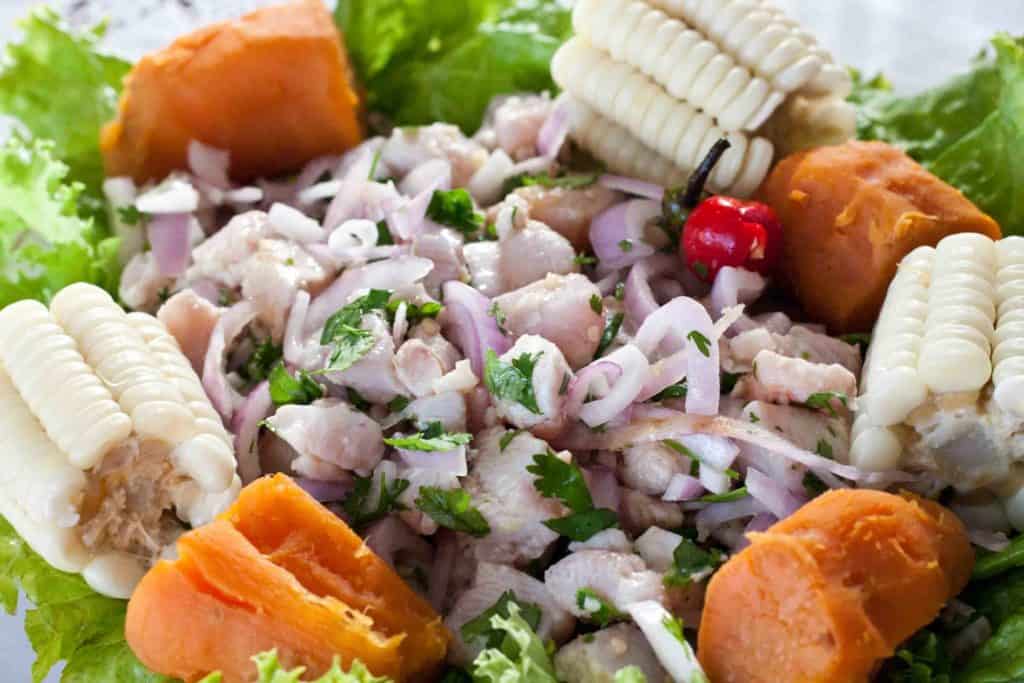
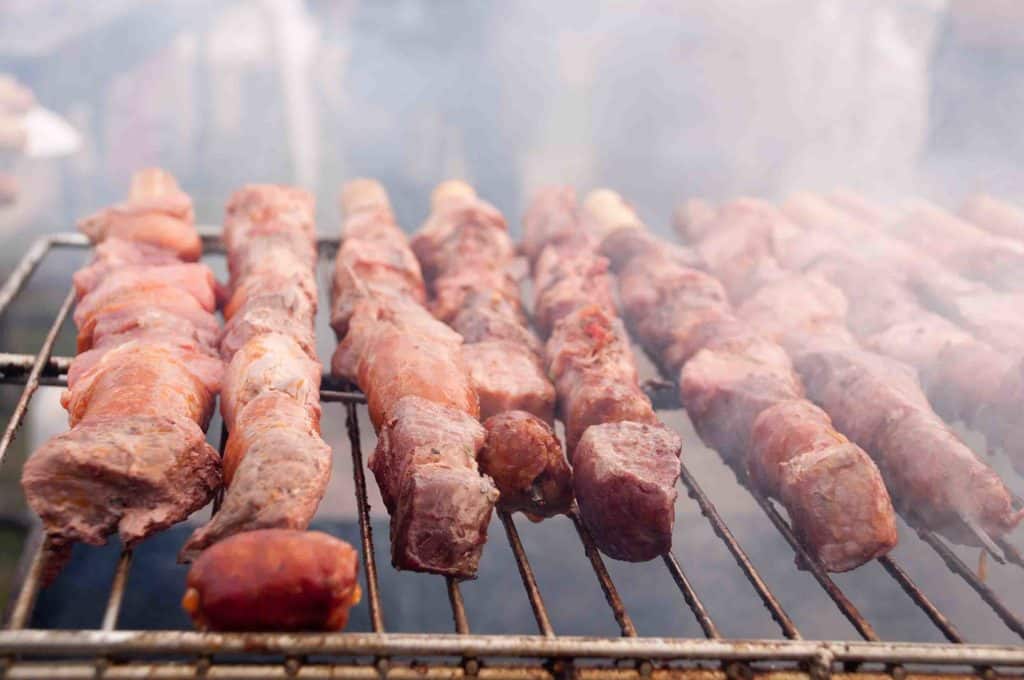
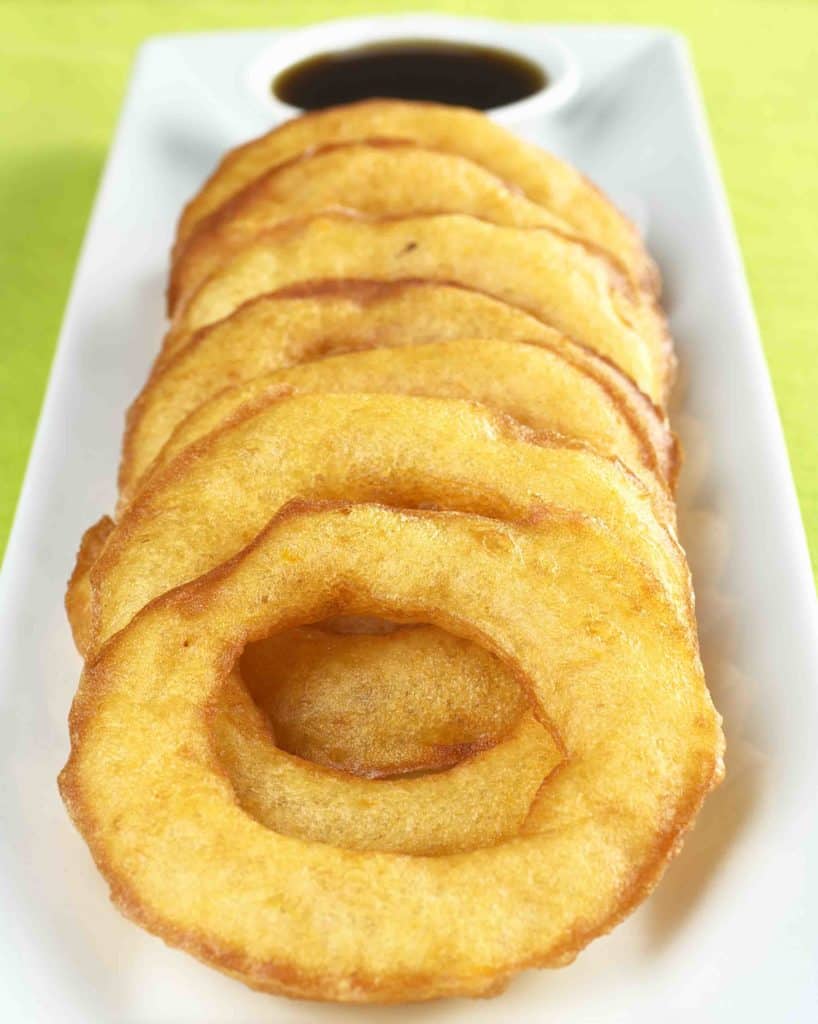
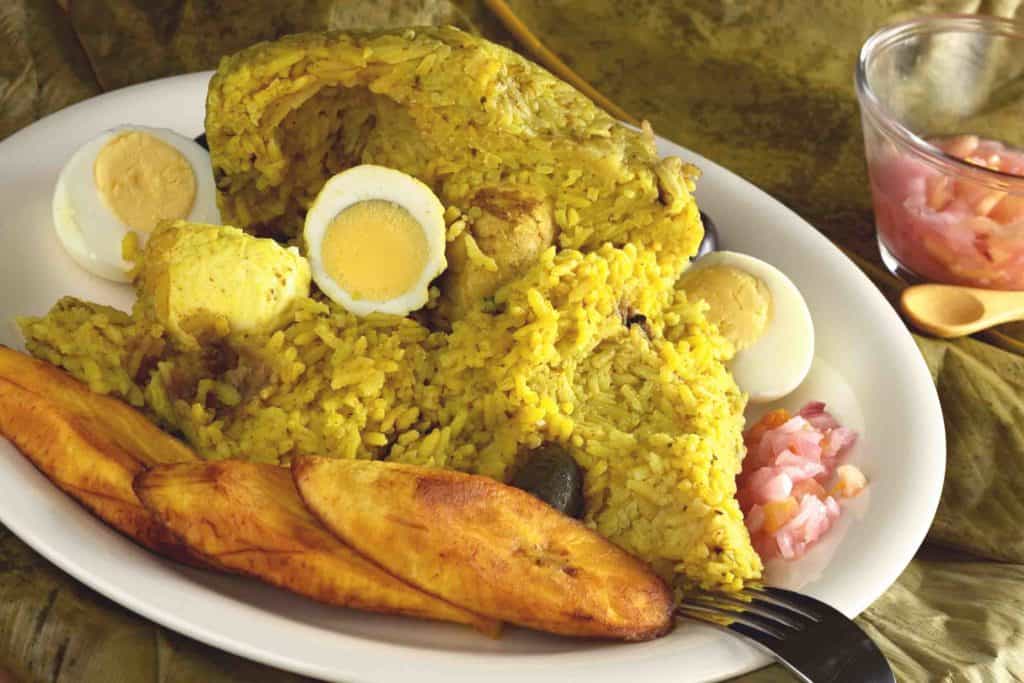
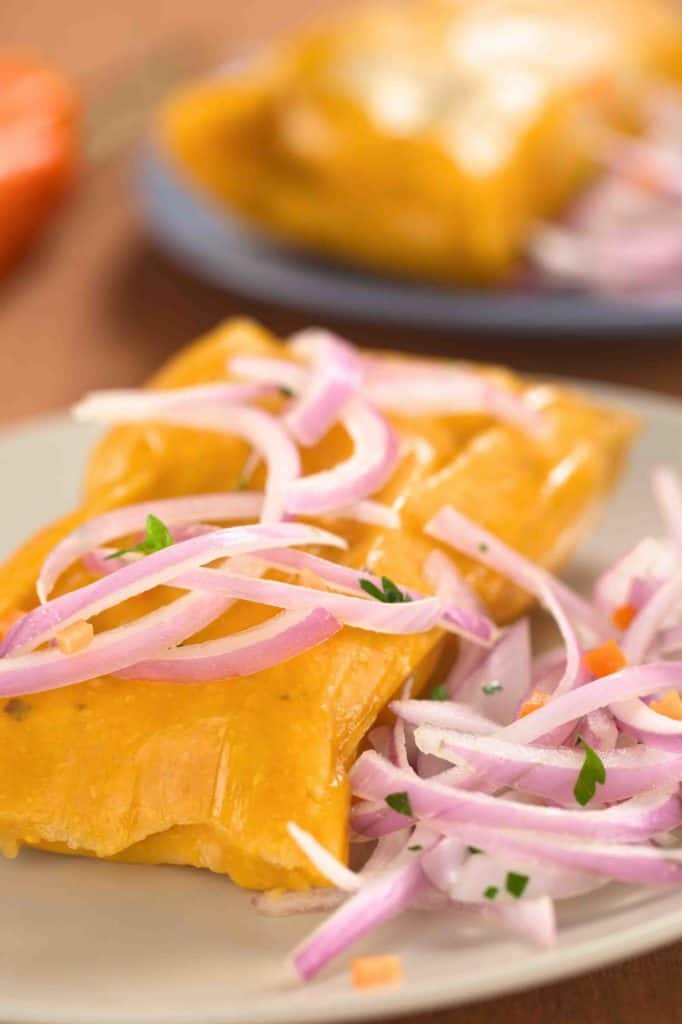
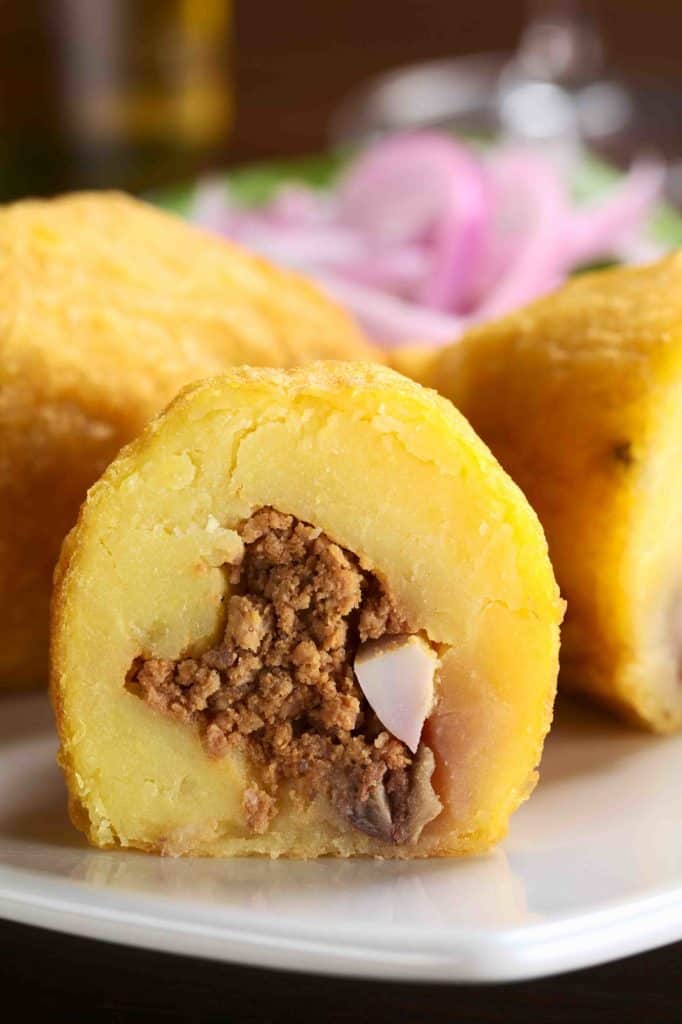
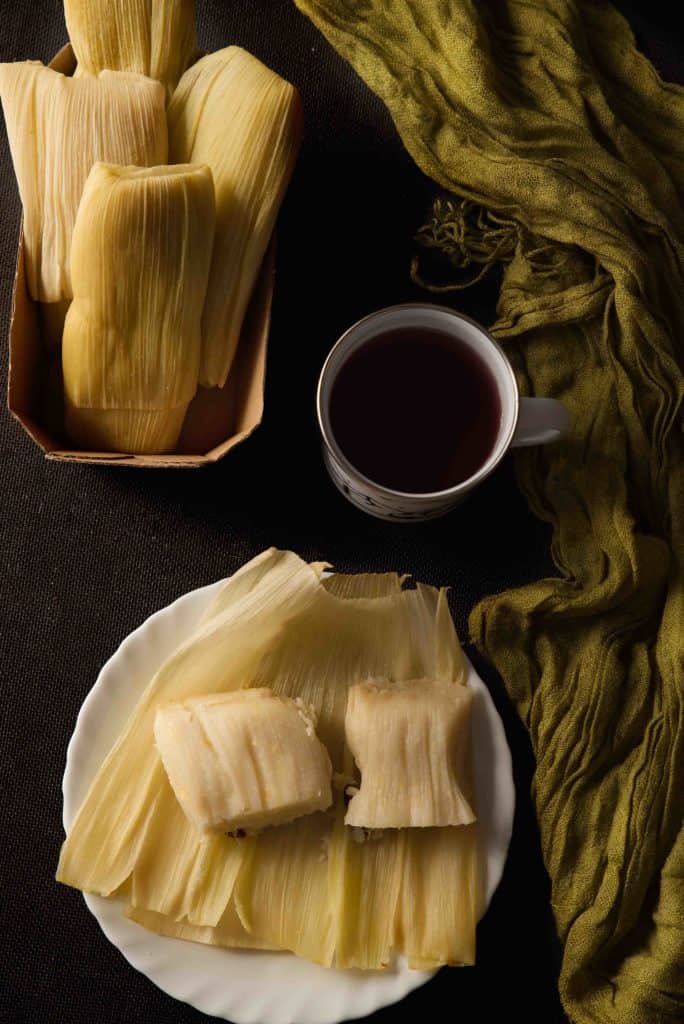
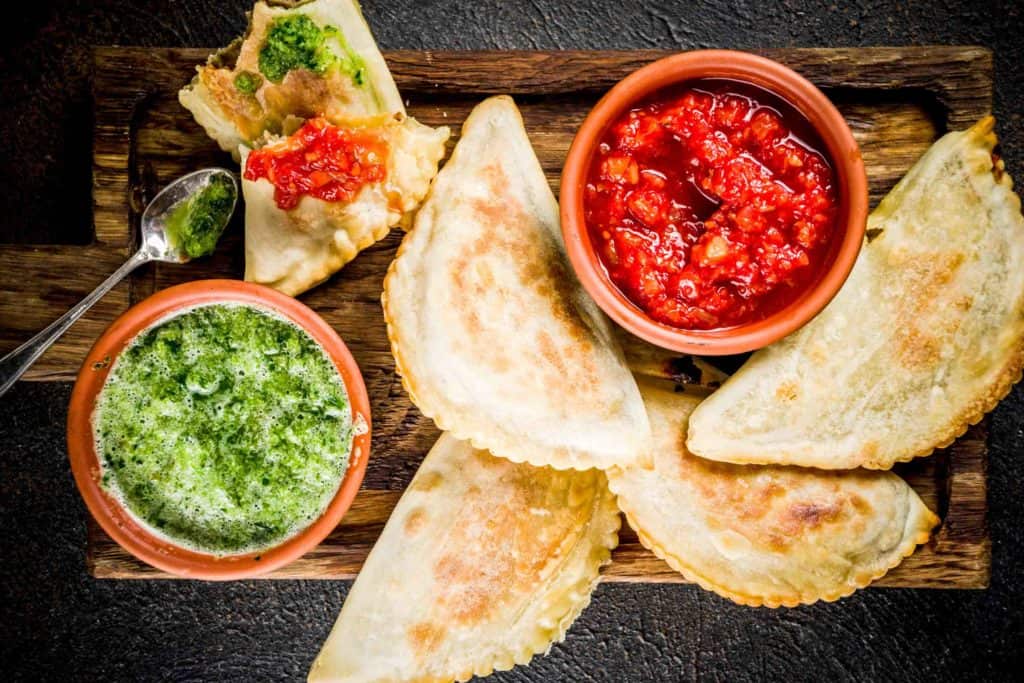
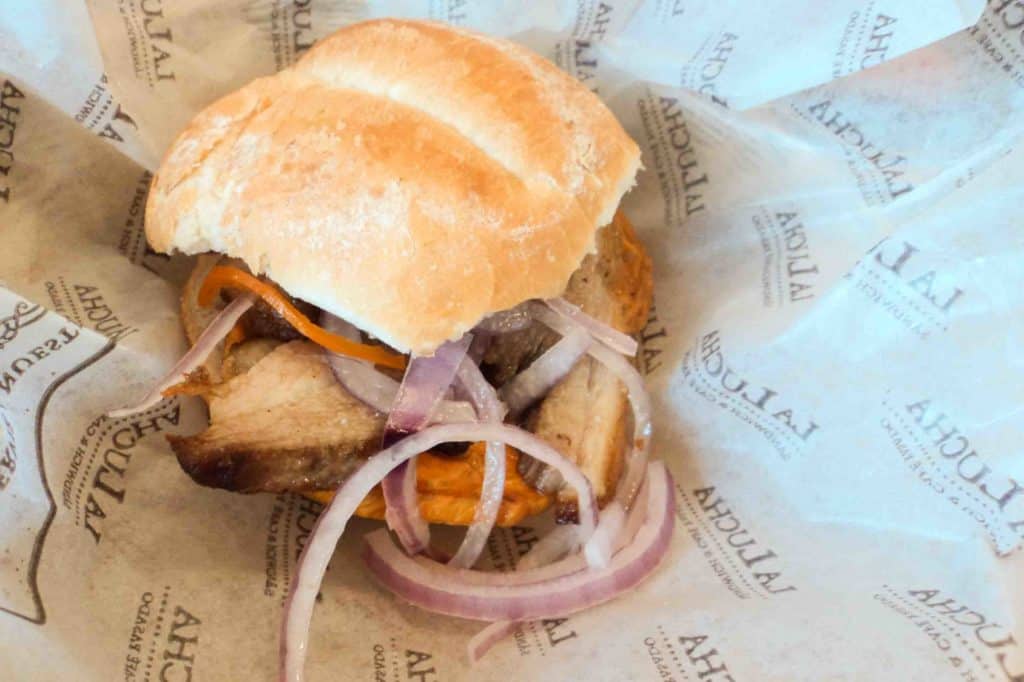
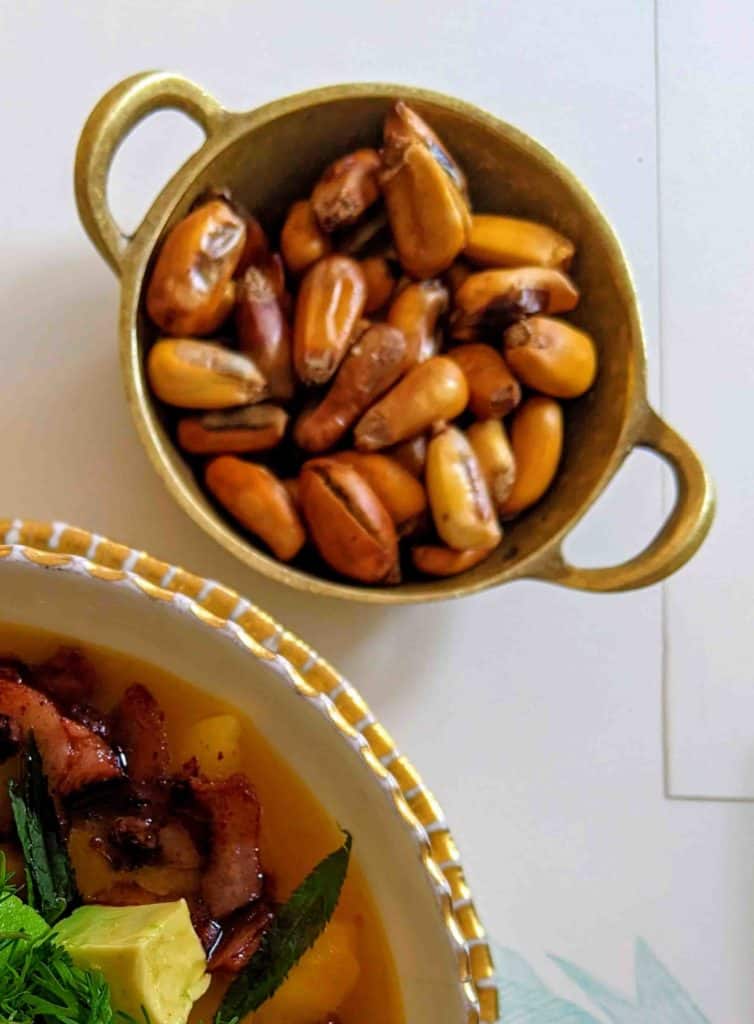
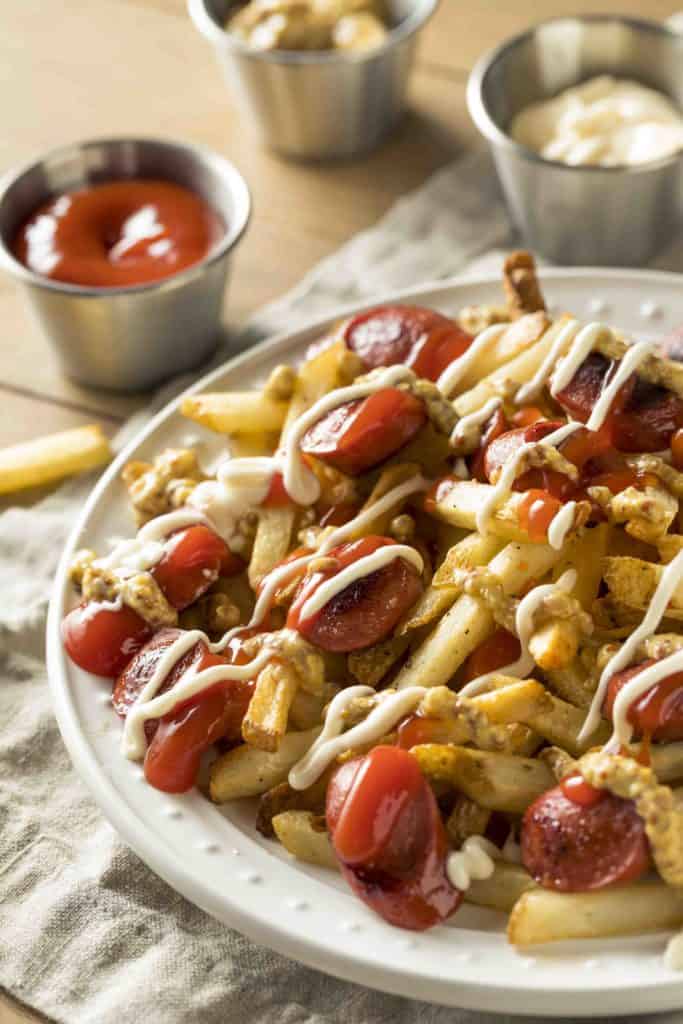
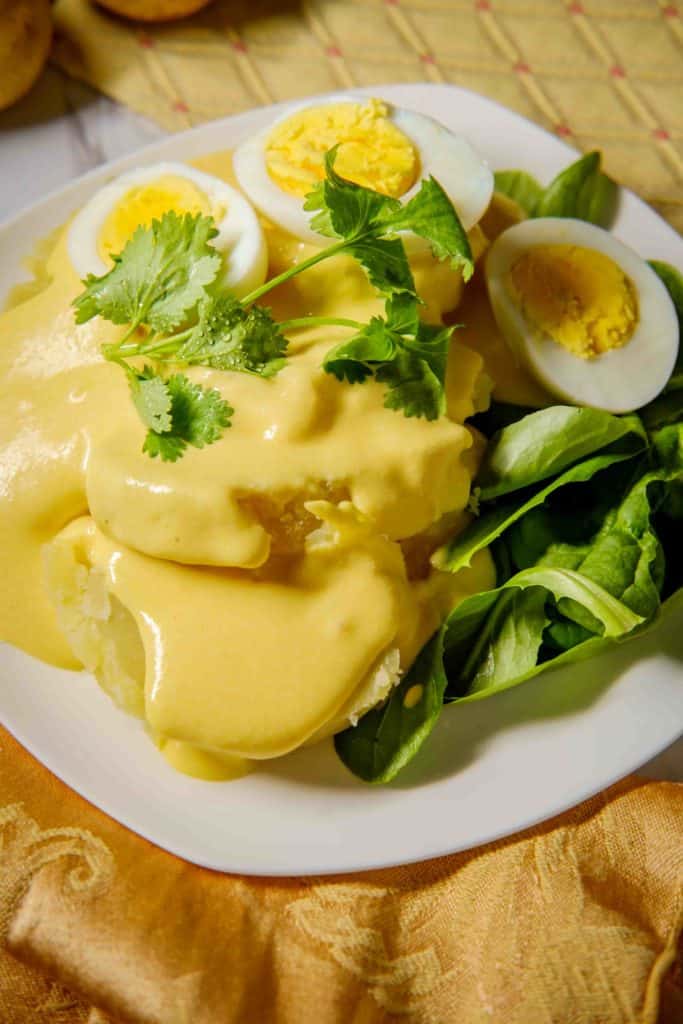
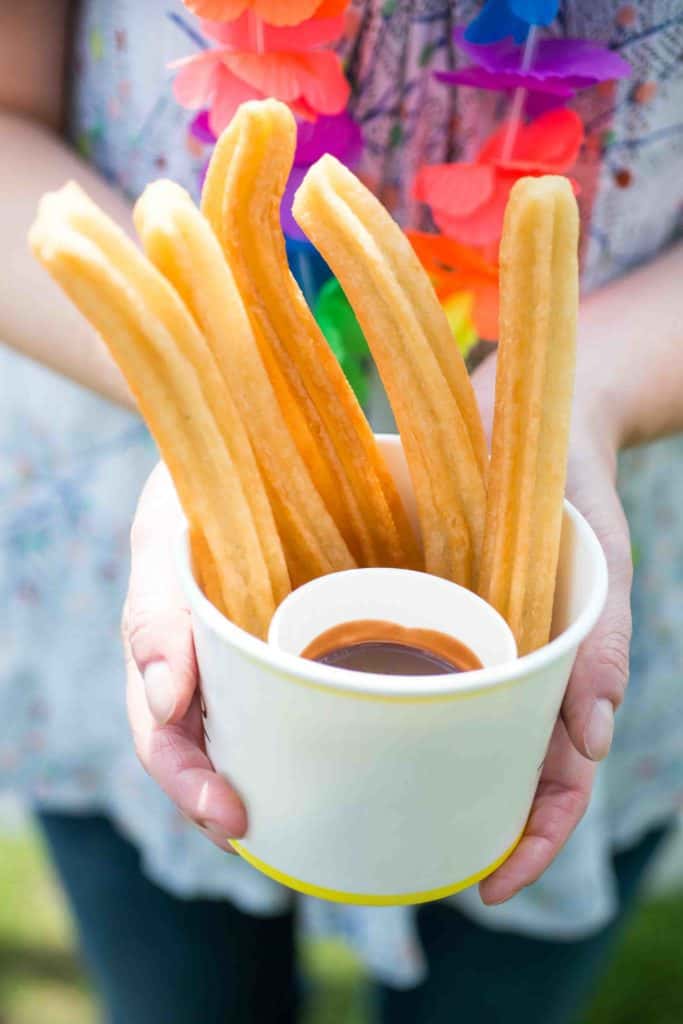
No doubt, peruvian food is, at large, one of the best in the whole world.
I’m sure there are even more snacks that could be included in your delicious list, so let me add one of my favorite ones: Causa Limeña
Thanks so much for this recommendation!